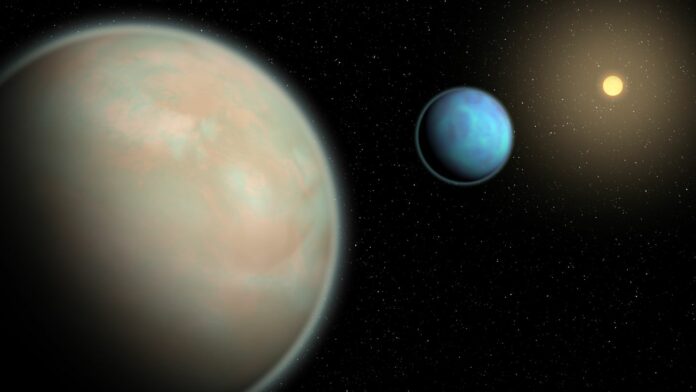Scientists at Johns Hopkins have made a breakthrough by simulating hazy conditions on water-rich exoplanets, helping us understand how haziness affects observations by telescopes. The findings will aid in modeling the formation and evolution of water exoplanets and provide new resources for studying exoplanet atmospheric chemistry.
Is there life outside the solar system? Answering such questions requires detailed modeling of all different types of planets with water. However, this is a massive challenge due to the limitations of the lab work to do. Hence, scientists are using a new lab technique to get more out of the data from big, fancy telescopes.
The team conducted experiments in the laboratory of Sarah Hörst ( a Johns Hopkins associate professor of Earth and planetary sciences) in a customized chamber. They are the first to calculate the maximum amount of haze that can form on water worlds outside of our solar system.
The presence of hazes and other particles in the planet’s atmosphere greatly influences global temperatures, incoming levels of starlight, and other factors that can hinder or foster biological activity.
Haze is made up of solid particles suspended in a gas that modifies how light reacts to the gas. The way particles disperse through an atmosphere can be influenced by haze, both in terms of intensity and kind, which can alter the information that can be obtained about distant planets using telescopes.
Chao He, a planetary scientist who led the research at Johns Hopkins, said, “Water is the first thing we look for when we’re trying to see if a planet is habitable, and there are already exciting observations of Water in exoplanet atmospheres. But our experiments and modeling suggest these planets most likely also contain haze. This haze really complicates our observations, as it clouds our view of an exoplanet’s atmospheric chemistry and molecular features.”
The team created two gas mixes with water vapor and additional substances that are thought to be common on exoplanets. To mimic how light from a star would initiate the chemical reactions that result in haze particles, they blasted the mixtures with UV radiation. To determine how the particles would react with light in the atmosphere, they next measured the amount of light that the particles reflected and absorbed.
The newly discovered information more closely matched the chemical signatures of a well-studied exoplanet known as GJ 1214 b than earlier studies, indicating that hazes with different optical characteristics might cause misinterpretations of a planet’s atmosphere.
Hörst said, “Alien atmospheres can differ greatly from those in our solar system. There are more than 5,000 confirmed exoplanets with varying atmospheric chemistries.”
The team is currently working on producing additional “analogs” of haze in the lab using gas mixes that more closely resemble what scientists observe via telescopes.
Journal Reference:
- He, C., Radke, M., Moran, S.E. et al. Optical properties of organic haze analogues in water-rich exoplanet atmospheres observable with JWST. Nat Astron (2023). DOI: 10.1038/s41550-023-02140-4
